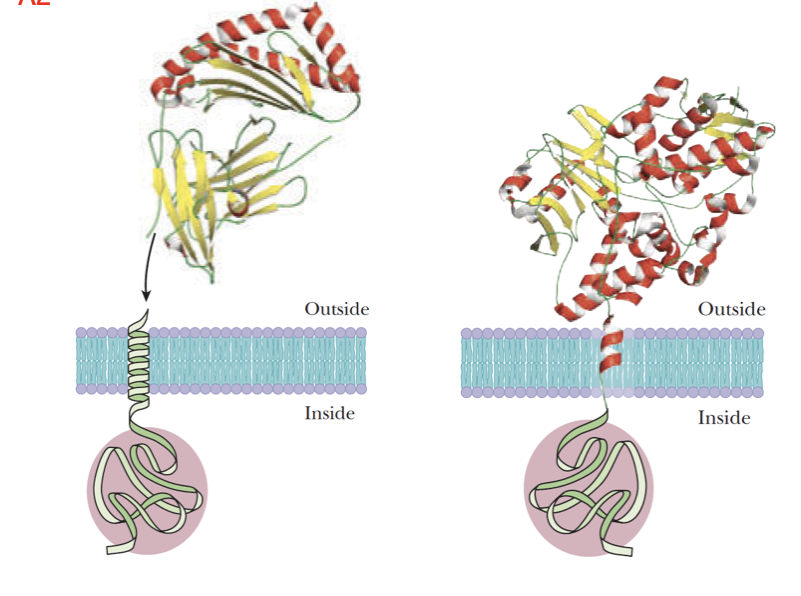Lipids 2 - Membranes Flashcards
1/34
Earn XP
Description and Tags
Flashcards about Lipids and Membranes
Name | Mastery | Learn | Test | Matching | Spaced |
|---|
No study sessions yet.
35 Terms
Glycerophospholipid
A 1,2-diacylglycerol that has a phosphate group esterified at carbon atom 3 of the glycerol backbone; also known as a phosphoglyceride or a glycerol phosphatide.

Function of Glycerophospholipids
Essential components of cell membranes found in small concentrations in other parts of the cell.
Phospholipids
A broader class of lipids that include all glycerophospholipids.
Phosphatidic acid
Found in small amounts in most natural systems and is an important intermediate in the biosynthesis of the more common glycerophospholipids.
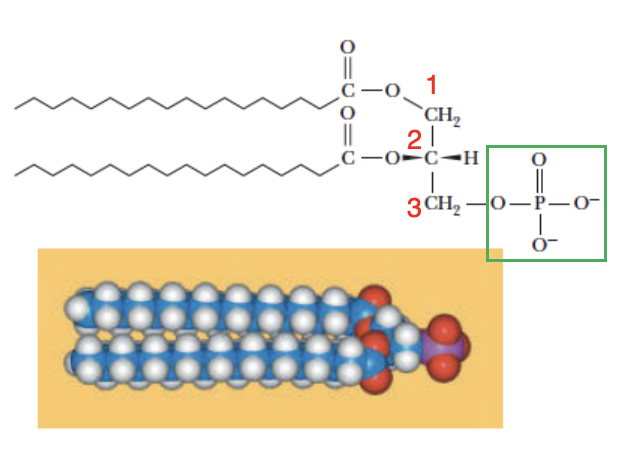
Head group
The phosphate, together with such esterified entities.

Phosphatidylcholine (aka lecithin) or phosphatidylethanolamine
Phosphatides with choline or ethanolamine.

Phosphatidylcholine and phosphatidylethanolamine
Which phosphatides are two of the most common constituents of biological membranes.
Other common head groups found in phosphatides
Glycerol, serine, and inositol.
Diphosphatidylglycerol (Cardiolipin)
A phosphatidylglycerol is esterified through the C-1 hydroxyl group of the glycerol moiety of the head group to the phosphoryl group of another phosphatidic acid molecule
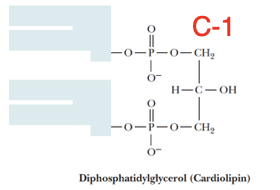
Cardiolipin, Sphingomyelin/Inositol Sphingholipid
Lipids found in eukaryote cell membranes.
Fluid
Membranes and lipids move.
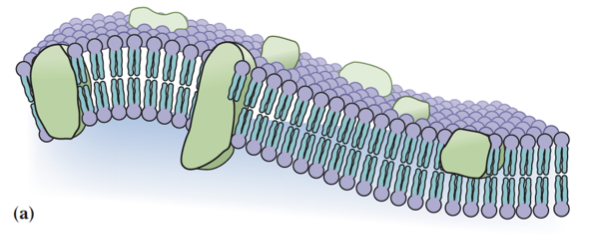
Mosaic
Full of non-lipid components like proteins.
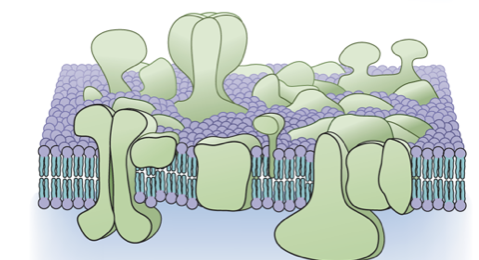
Fluid Mosaic Model
Describes membrane dynamics membranes and lipids move; full of non-lipid components like proteins
The lipids and proteins are assumed to be mobile; they can diffuse laterally in the plane of the membrane. Transverse motion may also occur, but it is much slower.
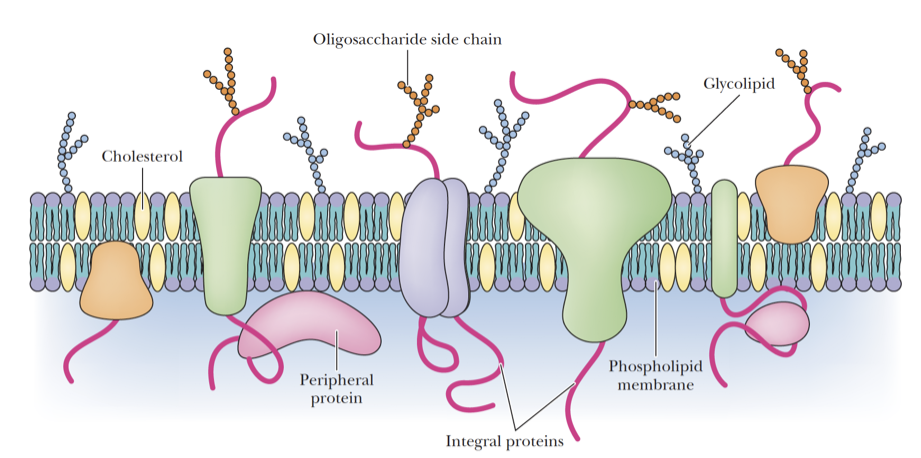
Peripheral Membrane Proteins
Associate Loosely with the Membrane.
Four possible modes for the binding of Peripheral Membrane Proteins
Ionic interactions and H-bond interactions
Amphipathic alpha-helix
Association with integral protein
hydrophobic loop.
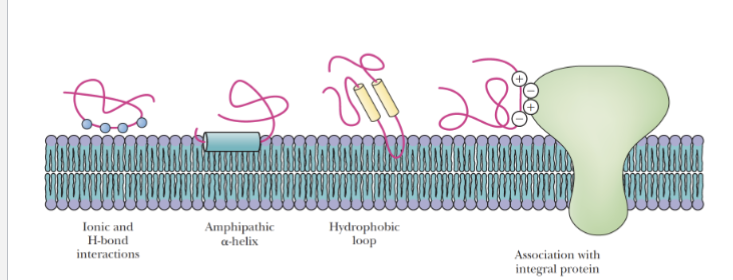
Single transmembrane helix spanning proteins
Consists of a single transmembrane helix.
Example: Glycophorin A
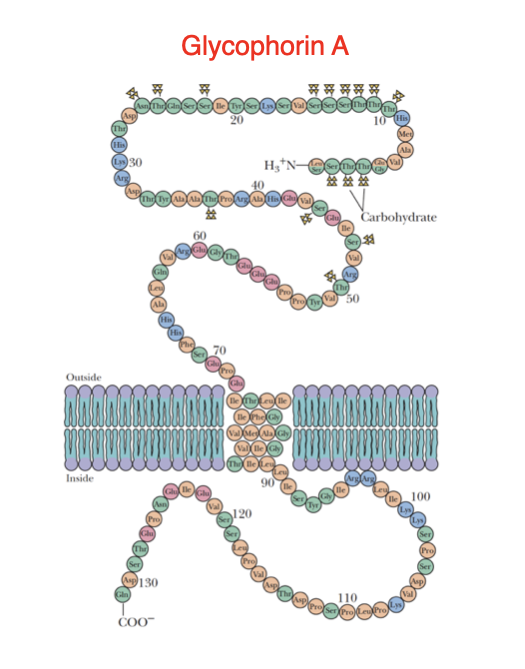
Bacteriorhodopsin
Composed of seven transmembrane alpha-helical segments connected by short loops.
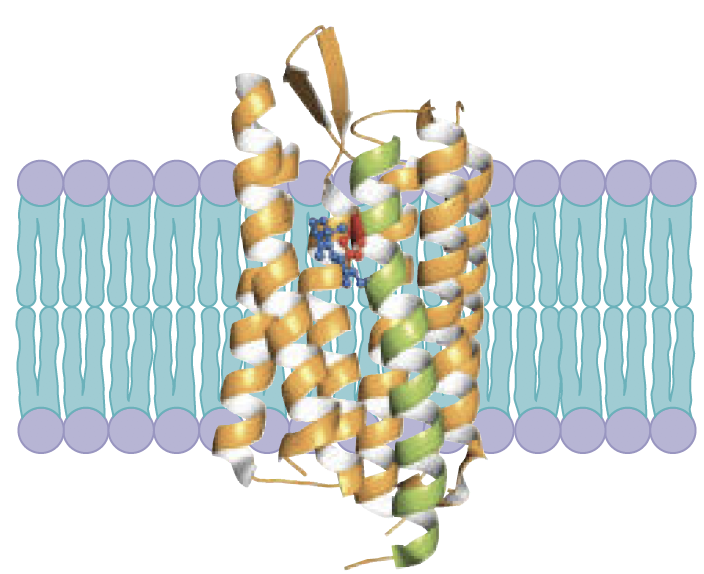
Retinal chromophore
A light-absorbing molecule that lies approximately parallel to the membrane and between the helical segments.
Proline residue
Induces a kink in one of the helical segments.
Membrane protein 'tilt'
Not all the embedded segments of membrane proteins are transmembrane and oriented perpendicular to the membrane plane. The glutamate transporter homolog has 'Reentrant' helices and interrupted helices
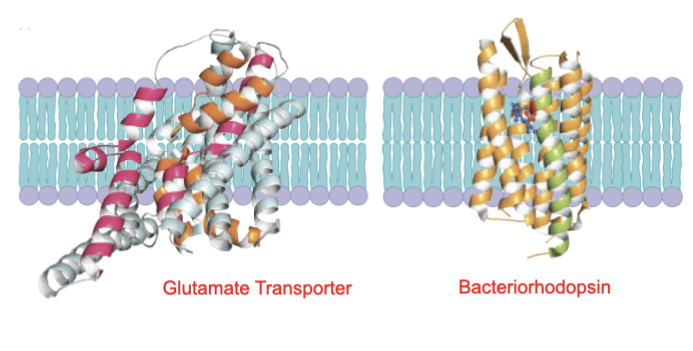
Beta barrel transmembrane proteins
Multi-pass transmembrane proteins that form a barrel shape.
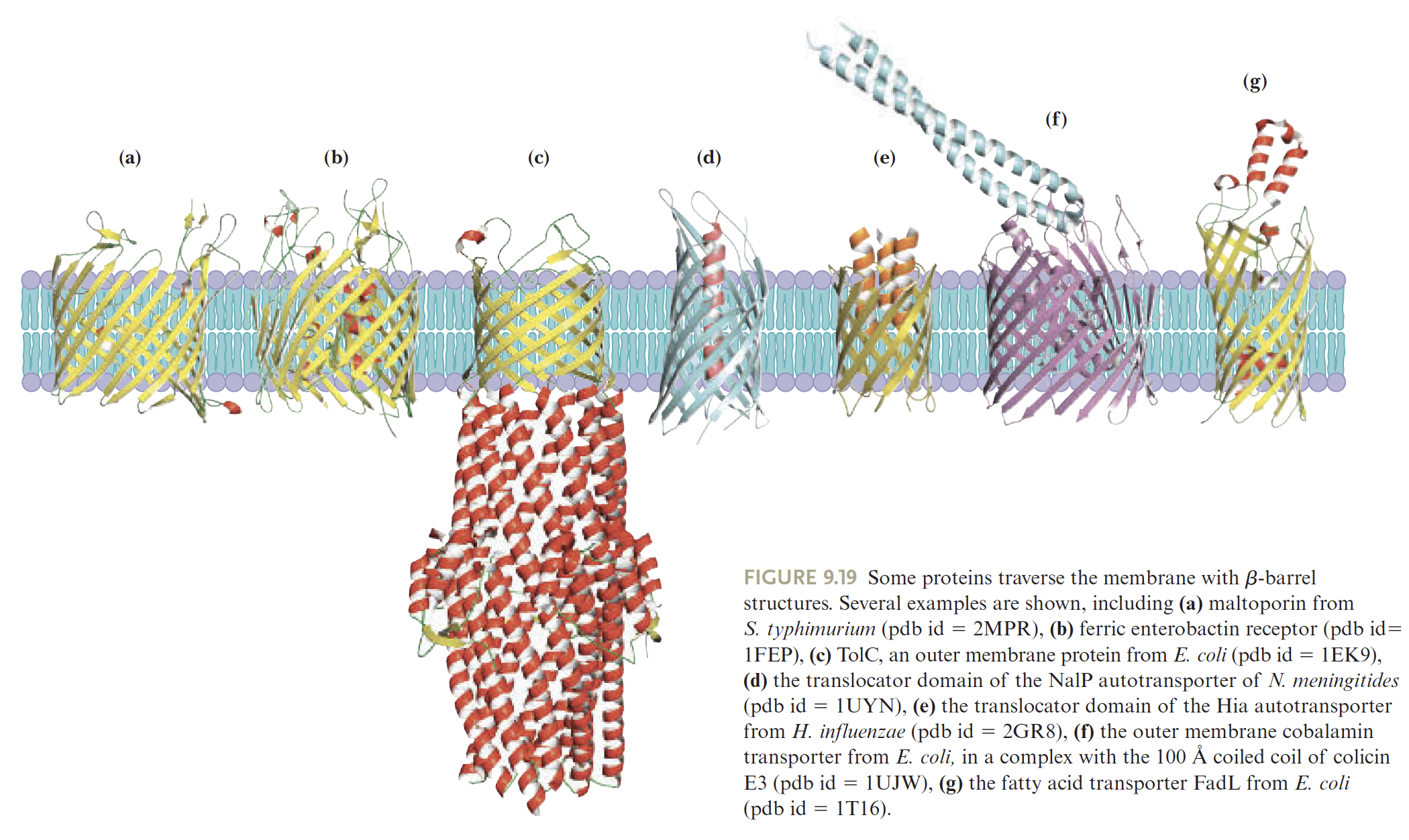
Thioester-Linked Fatty Acyl Anchors or Thioether-Linked Prenyl Anchors
Proteins can be anchored to the membrane by covalently coupled lipids through
Thioester-Linked Fatty Acyl Anchors
This type of fatty acyl chain linkage has a broader fatty acid specificity than N-myristoylation. Myristate, palmitate, stearate, and oleate can all be esterified this way, with the C16 and C18 chain lengths being most commonly found.
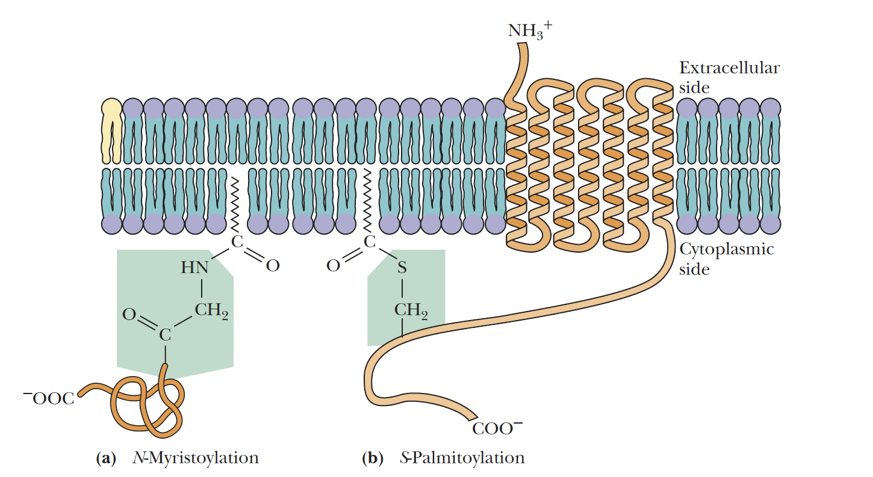
Thioether-Linked Prenyl Anchors
Polyprenyl (prenyl): Long-chain polyisoprenoid groups derived from isoprene units.
Prenylation of proteins destined for membrane anchoring can involve either farnesyl or geranyl-geranyl groups
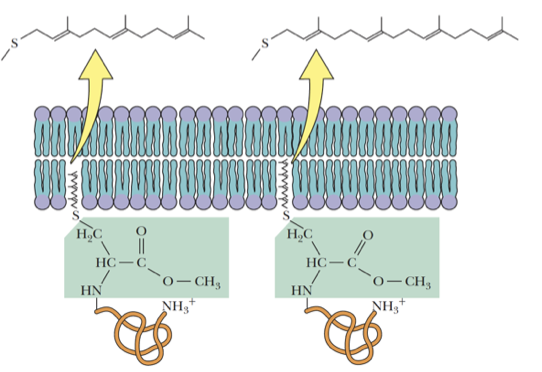
Glycosyl Phosphotidylinositol (GPI) anchors
Groups modify the C-terminus of a target protein via an ethanolamine residue linked to an oligosaccharide, which is linked in turn to the inositol moiety of a phosphatidylinositol.
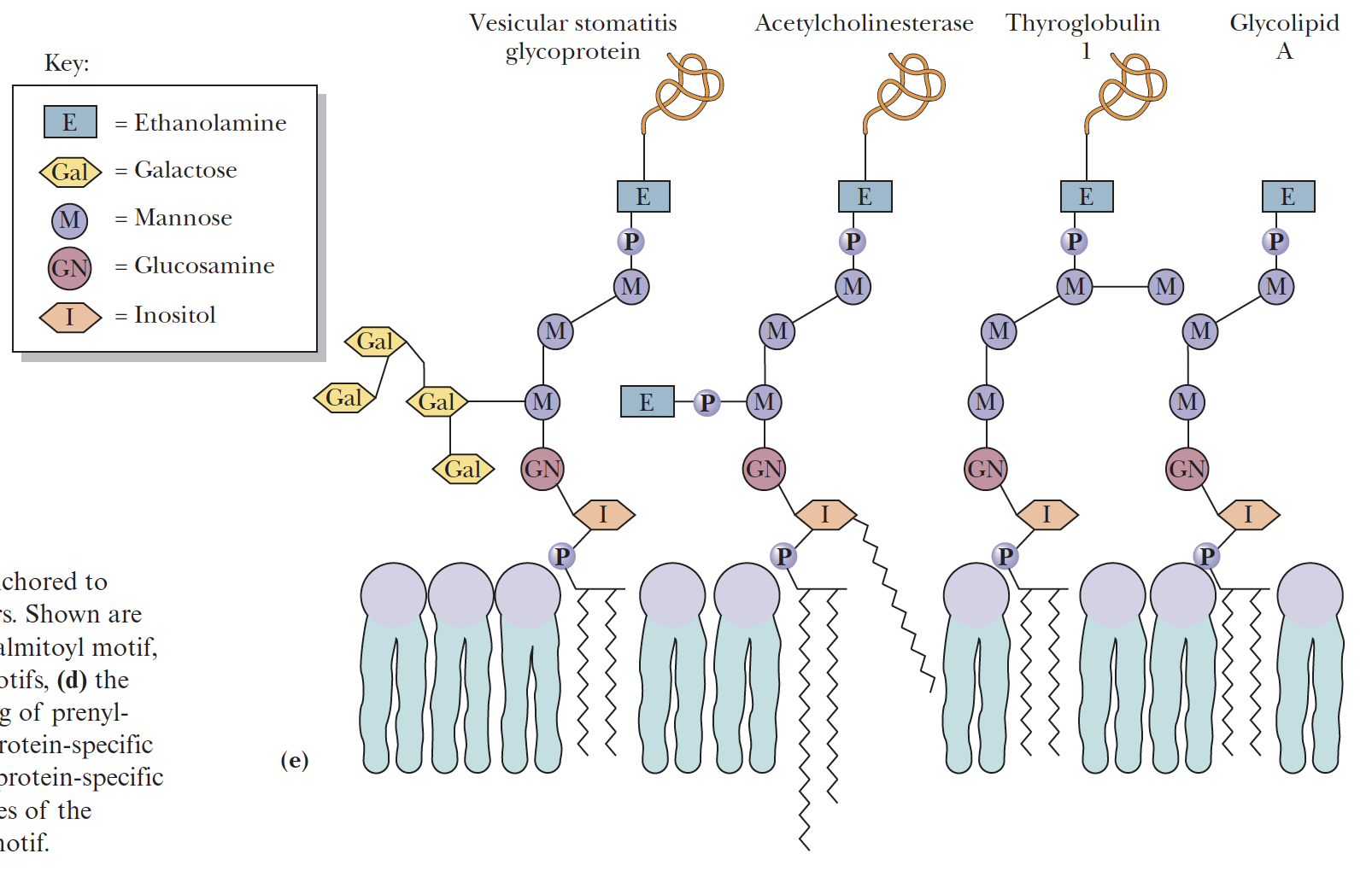
GPI anchor oligosaccharide
An oligosaccharide typically consisting of a conserved tetrasaccharide core of three mannose residues and a glucosamine, which can be altered by addition of galactosyl side chains of various sizes and extra phosphoethanolamines
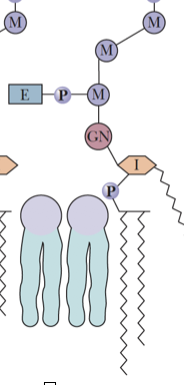
What does the outer face of membrane contain?
Sugar side chain,
Hydrophilic (polar head) of phospholipid
Hydrophobic (nonpolar) fatty acid tail of phospholipid
What does the inner face of the membrane contain?
Cholesterol
Integral (intrinsic) proteins
Peripheral (extrinsic) protein
What is the outer leaflet mainly composed of?
Spingomyelin (SM), Phosphatidylcholine (PC), and Phosphatidylthanolamine (PE)
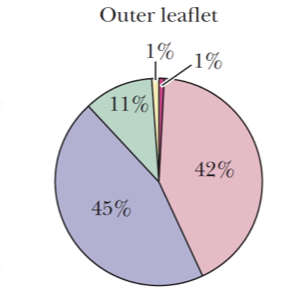
What is the inner leaflet mainly composed of?
Phosphatidylserine, phosphatidylinositol/ phosphatidic acid (PI/PA)
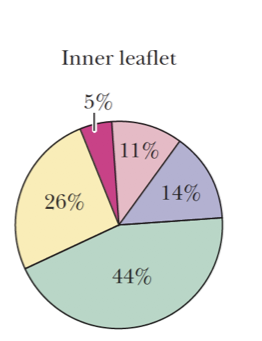
Micelle formation
formed from an amphipathic lipid in water, position the hydrophobic tails in the center of the lipid aggregation with the polar head groups facing outward.
CMC (critical micelle concentration)
Amphipathic molecules that form micelles are characterized by
Predomination of individual lipid molecules
Below the CMC
Micelles preferred form
preferred form of aggregation in water for detergents and soaps.
Other examples of single transmembrane helix spanning proteins
HLA-2 and Monoamine oxidase
